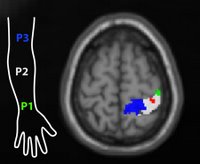 Does it matter that young children are spending increasingly more time in day care, as more women than ever before are choosing to return to work soon after giving birth?
Does it matter that young children are spending increasingly more time in day care, as more women than ever before are choosing to return to work soon after giving birth?Yes, according to Jay Belsky in his round-up of the main findings from the NICHD Study of Early Child Care in America – “a unique and massive collaborative enterprise”, in which over 1200 children from 10 communities were followed from birth through to starting school.
Critics of earlier research had suggested the problem of day care was all to do with poor quality, but the new study found that even when controlling for the quality of care, the quantity of day care still mattered. Children who spent early, extensive and continuous time in the care of non-relatives were more likely to show later behavioural problems, such as aggressiveness and disobedience, as indicated by ratings from their caregivers, their mothers and eventually their teachers.
The type of care mattered too. The study found children who spent more time in a child care centre (as opposed to in another person’s home with a non-relative, or in a home with a relative other than their mother) tended to show benefits in terms of their cognitive and linguistic development, but to also show more behavioural problems, being more aggressive and disobedient.
Finally, and not surprisingly, the quality of care was also found to be relevant, in terms of how attentive and responsive carers were, and how stimulating the care environment was. Low quality care was particularly detrimental to the children of mothers who lacked sensitivity. High quality care on the other hand was associated with later superior cognitive-linguistic functioning.
Given these results, and similar findings from British studies such as the EPPE Study, Belsky concluded that policies should be introduced to discourage parents from putting their children into day care for too long, including the expansion of parental leave, and tax policies to reduce the economic factors that encourage parents to leave their children in the care of other people. “Of significance is that all of these conclusions could be justified on humanitarian grounds alone”, Belsky said.
__________________________________
Belsky, J. (2006). Early child care and early child development: Major findings of the NICHD Study of Early Child Care. European Journal of Developmental Psychology, 3, 95-110.
Link to related cover-story article in the latest issue of Prospect magazine (free access). "For the first time in history, women in developed societies can take up any occupation or career they please. This has brought enormous benefits. But it has also had some less positive consequences—the death of sisterhood, a decline in female altruism and growing disincentives to bear children" by Alison Wolf.
You have read this article Developmental
with the title March 2006. You can bookmark this page URL https://psychiatryfun.blogspot.com/2006/03/is-day-care-harmful-to-small-children.html. Thanks!























